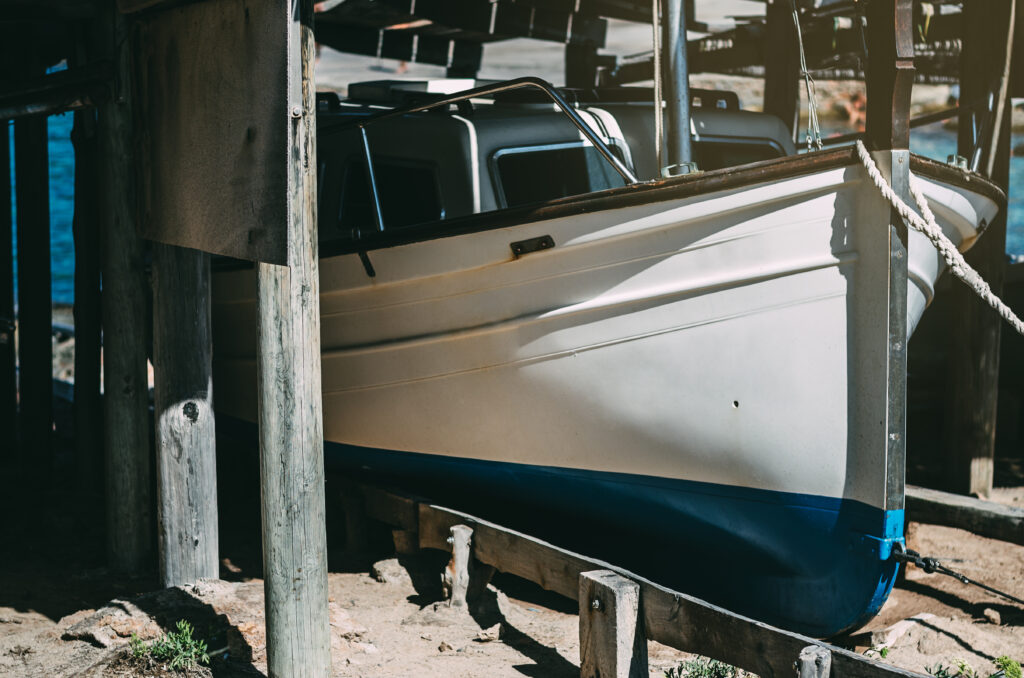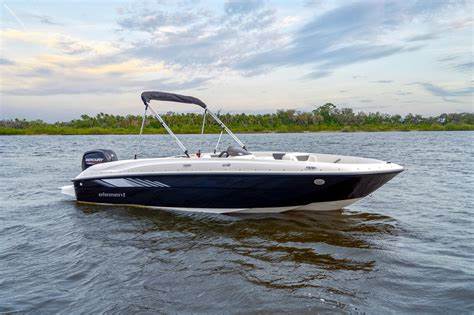In this article, we go over can you finance a boat motor, exploring when motors are included in boat loans, how stand‑alone motor financing works, and how marine‑focused lenders like us can help you structure payments for both new and replacement engines.
For many boaters, the engine is the heart of their vessel. Whether you’re buying a new boat with a factory‑installed motor or upgrading to a new outboard on an existing hull, financing can make these purchases accessible without draining your savings. Let’s dive into how motor financing works.

Understanding Boat Motor Financing
A boat motor, whether inboard or outboard, is often one of the most expensive components of a vessel. A new high‑horsepower outboard can cost anywhere from $8,000 to over $30,000, and twin or triple engine setups on larger boats can climb into six figures.
Financing allows you to spread these costs over time. There are two main scenarios:
- Motor included in the purchase of a new or used boat
- Motor purchased separately as a repower or upgrade
The financing process differs slightly depending on which situation you’re in.

Financing a Motor as Part of a Boat Purchase
Most standard boat loans include the cost of the motor. If you’re buying a new boat from a dealer, the engine is typically bundled into the overall sales contract. Your loan amount covers:
- The boat hull
- The motor or motors
- Installed electronics and accessories
- Trailer (if included in the package)
In this case, you don’t need separate motor financing. The dealer or marine lender submits the total purchase price, and the lender structures one loan for everything.
For example, buying a $65,000 center console with a factory‑installed 300 HP outboard might require 10–20% down, with the remainder financed over 10–15 years. The engine is treated as part of the boat’s overall value.

Financing a Motor Separately (Repower Loans)
But what if you already own a boat and need a new motor? This is known as a repower, and many boaters consider it when:
- Their existing engine is worn out or inefficient
- They want more horsepower or better fuel economy
- They want the reliability and warranty of a new engine
Can you finance a boat motor in this scenario? Yes—through specialized marine lenders and programs designed for repowers.
How Repower Financing Works
Repower loans typically cover:
- The new motor(s)
- Installation costs
- Related parts or rigging (controls, gauges, wiring)
Some lenders will also finance accessories like new props or mounts. The process is similar to a standard boat loan but with a few differences:
- Loan terms are often shorter (3–7 years) because motors depreciate faster than hulls.
- Down payments may be slightly higher (15–20%).
- Documentation may include proof of boat ownership, hull condition, and insurance.
At Float Finance, we’ve helped many clients roll repower costs into existing loans or secure stand‑alone financing tailored for motors.

Why Motor Financing Helps Boat Owners
Replacing or upgrading a motor is a big expense, and not everyone has the cash on hand. Financing helps boaters:
- Keep their boat on the water without long saving delays
- Upgrade to more efficient engines that lower fuel costs
- Maintain or increase resale value with a newer power setup
- Enjoy manufacturer warranties immediately rather than waiting
For many, financing a motor is a smart way to invest in the long-term performance of their vessel.
Key Factors Lenders Consider for Motor Loans
When lenders evaluate a motor‑specific loan, they look at:
- Boat ownership: You typically need to show proof that you own the boat the motor will power.
- Boat condition: A lender wants to know the hull is sound, as the motor adds value.
- Motor brand and specs: Reputable brands and models are easier to finance because they hold value better.
- Installation details: Lenders may want proof that the motor will be installed by a certified dealer or technician.
- Borrower profile: Credit score, income, and debt‑to‑income ratio are assessed just like any other loan.
Can You Refinance a Boat to Add a Motor?
Another option is refinancing your existing boat loan and adding the cost of a new motor. For example:
- You owe $30,000 on a boat currently worth $55,000.
- You want to add a $15,000 motor.
- A lender may refinance the boat for $45,000, covering the motor cost while adjusting your term and payment.
This approach consolidates into one loan instead of juggling two payments.

Typical Terms for Motor Loans
Motor loans often have shorter terms than full boat loans, such as:
- 36 to 84 months (3–7 years)
- Interest rates similar to or slightly higher than standard boat loans
- Down payments around 10–20%
For high‑value multi‑engine setups, some lenders offer longer terms if the combined package value justifies it.
Insurance Considerations
Most lenders require proof of insurance that covers both the hull and the new motor. If your policy doesn’t automatically cover a repower, update it before closing. Insurance may need to reflect:
- The new motor’s serial number and value
- Any changes in horsepower or vessel classification
- Liens listed for the lender
We help clients coordinate with insurers so there’s no delay in funding.
Choosing the Right Lender for Motor Financing
Not every bank or dealer offers stand‑alone motor loans. Working with a marine‑specialized lender ensures you get:
- Programs designed for repowers
- Understanding of boat‑specific insurance and titling
- Flexibility to include installation and rigging costs
Our boat financing services include assistance with motor‑only financing and refinancing options.

Real-Life Examples of Motor Financing
Example 1: Repowering a Fishing Boat
A client with a well‑maintained 2010 bay boat wanted to replace an aging outboard. The new motor and installation totaled $12,500. We helped them secure a 5‑year loan with a manageable monthly payment, keeping them fishing without draining savings.
Example 2: Upgrading to Twin Engines
Another client upgraded from a single 250 HP to twin 200 HP motors for offshore use. The $25,000 package was financed over 7 years through a marine lender, with installation costs included. Their boat’s performance and resale value improved instantly.
How to Prepare for Motor Financing
To make the process smooth:
- Gather proof of boat ownership and maintenance records.
- Get quotes from certified dealers for the motor and installation.
- Save a down payment of at least 10–20%.
- Check your credit and improve it if needed.
- Contact a marine lending expert to explore options.
By preparing these details, you’ll speed up approval and secure better terms.

Conclusion
So, can you finance a boat motor? Absolutely. Whether you’re buying a new boat with the engine included or upgrading an existing vessel with a repower loan, financing options are available to help spread out costs and keep you on the water.
At Float Finance, we specialize in structuring loans that fit your needs—whether it’s a full boat purchase, a refinance, or a stand‑alone motor loan. When you’re ready to power your boat with confidence, we’re here to help.
